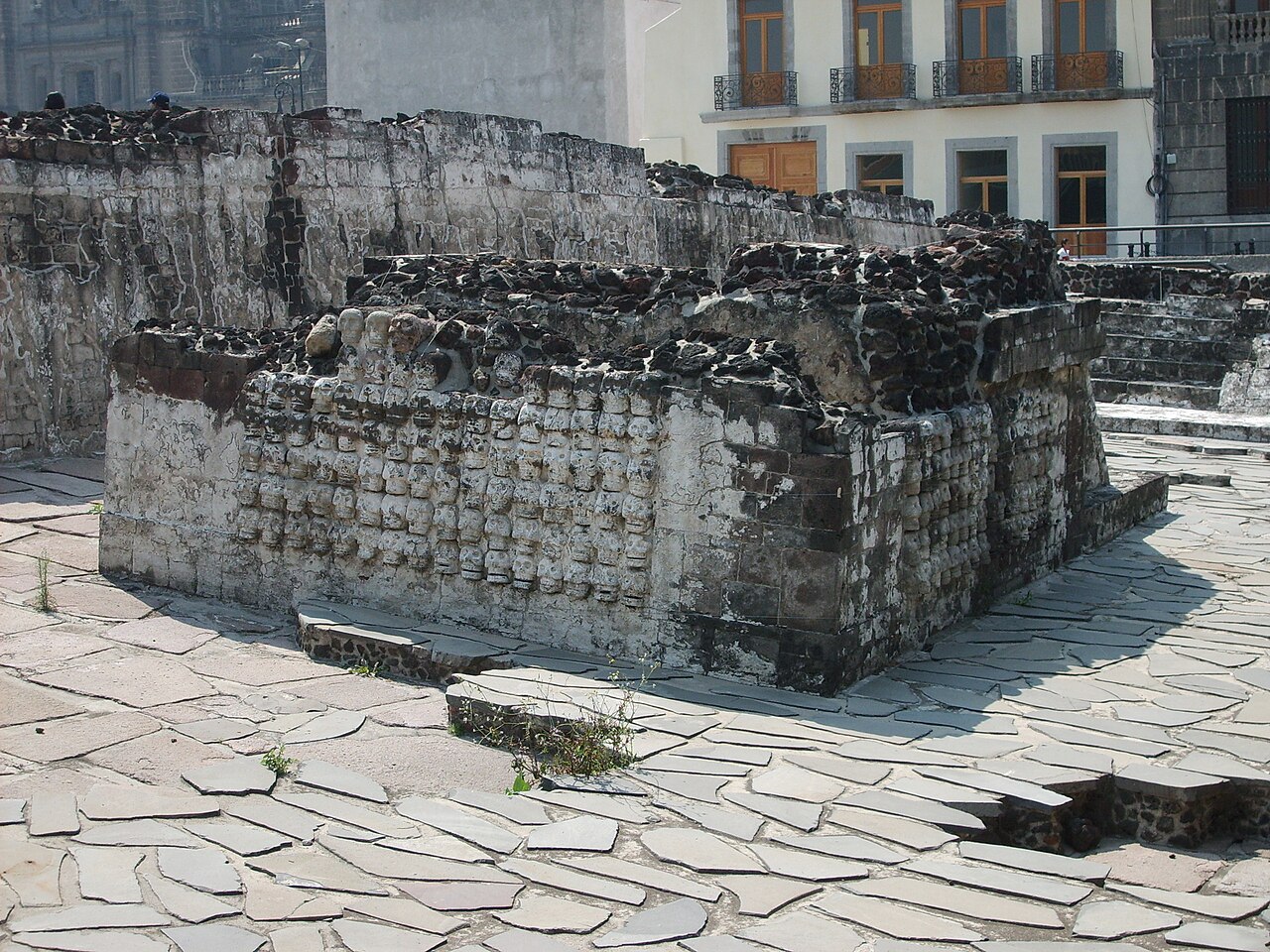
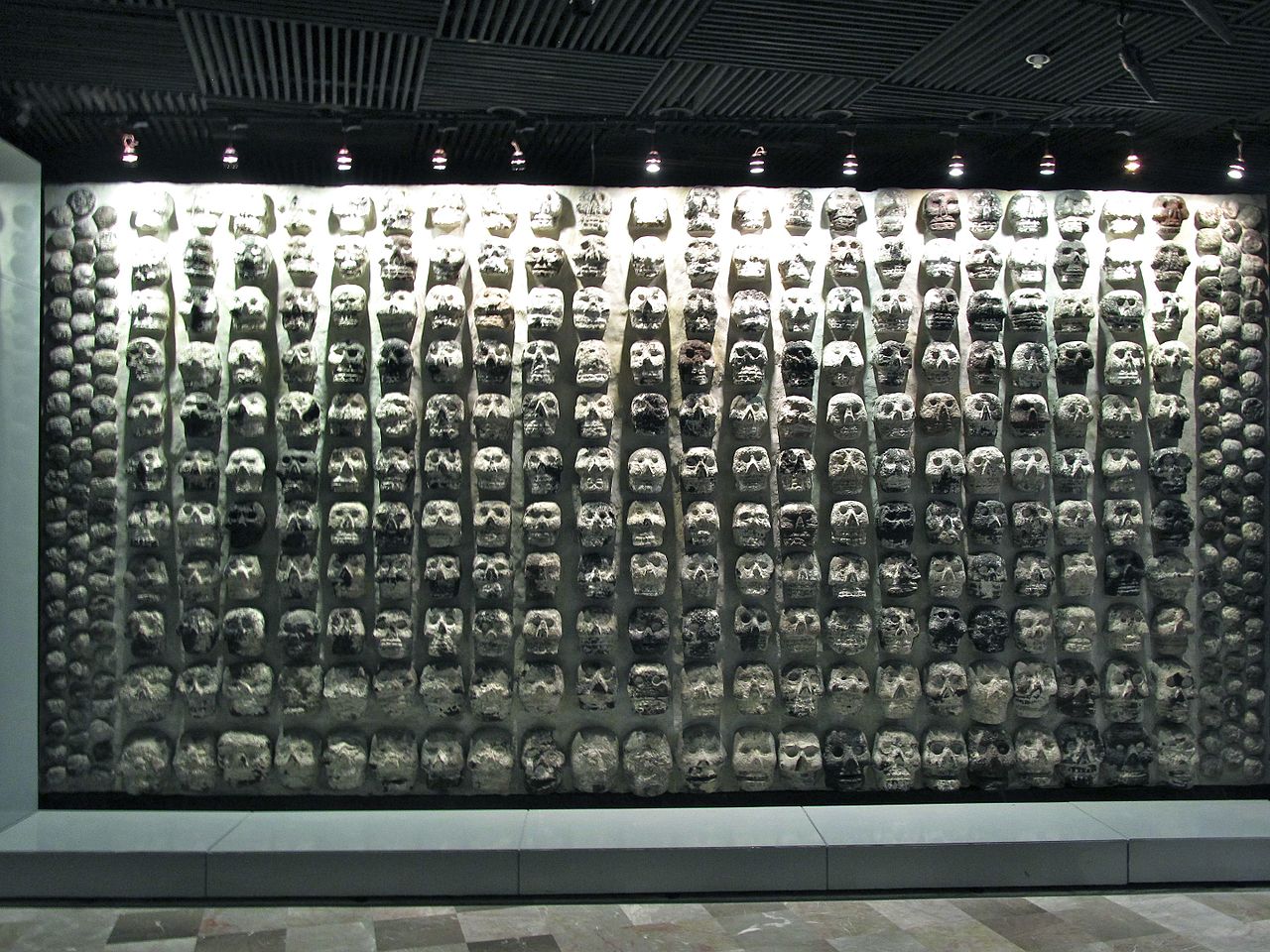

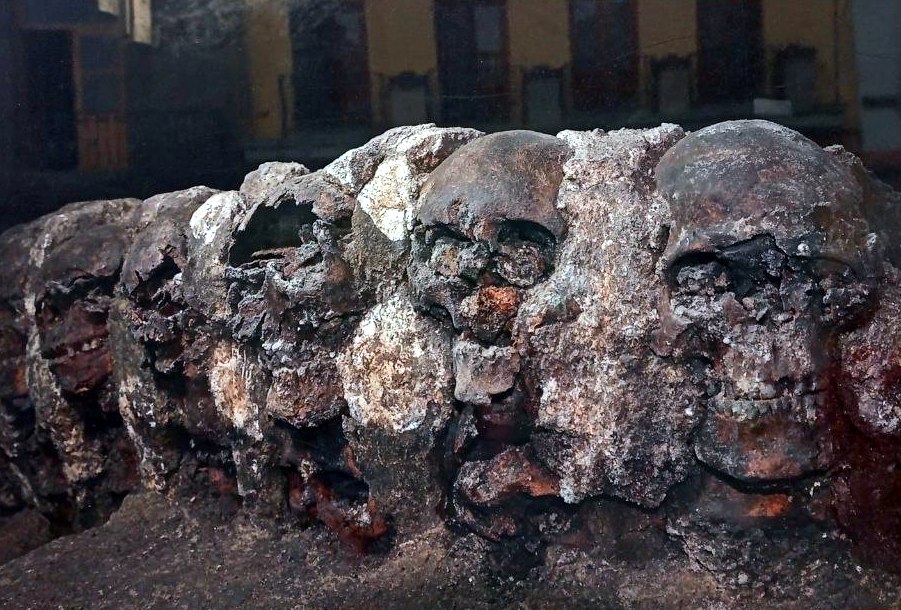
El Huei Tzompantli es lo que queda de un antiguo “estante de cráneos”, es decir; tzomplantli. Esto fue descubierto durante las excavaciones de 2015 de las propiedades en el lado norte de la calle de Guatemala, que corre a lo largo de la parte posterior (norte) de la Catedral Metropolitana . El sitio no está abierto al público, pero ha revelado mucho que antes se desconocía sobre la cultura y la cosmología de la antigua Tenochtitlan.
Los tzomplantli eran comunes en muchas culturas de la antigua Mesoamérica. Los cráneos de guerreros derrotados, víctimas de sacrificios e incluso equipos de pelota derrotados, se exhibían con fines rituales y triunfales entre otros. El nombre en sí es náhuatl, pero se utiliza ampliamente para referirse a estructuras similares en las sociedades de los hablantes de otras lenguas. Entre ellas destacan las de los mayas y los toltecas.
El Huei Tzomplantli es entonces el “Gran” o “Exonerado” tzomplantli, uno apto para la capital imperial. Los cráneos eventualmente retirados de los expositores temporales de madera que relataban conquistas o victorias recientes, fueron reubicados en una o más torres gigantes de cráneos en el lado norte del complejo ceremonial. Se dice que Andrés de Tapia, contemporáneo de Hernán Cortés, calculó el número total de cráneos de la torre ceremonial de la época en unos 136.000.
Desde que comenzaron las excavaciones formales en 2015, los investigadores del INAH han actualizado periódicamente sus hallazgos. Hoy el total de cráneos contabilizados ha sido de 650, incluyendo alrededor de 25% de mujeres y niños. Esto fue una gran sorpresa porque la mayoría de los cráneos siguen siendo de varones en edad militar y se cree que eran soldados y atletas.
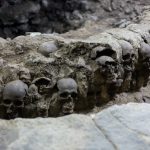 En muchas culturas de lo que hoy es México se destinaba un espacio dentro de las ciudades para exhibir torres de cabezas. Las cabezas se obtenían de los cuerpos de los cautivos de guerra y de aquellos conocidos como ixiptla, “representantes de los dioses”. En Tenochtitlan el Huey Teocalli o Templo Mayor tenía en un costado otro Huey Tzompantli, o torre mayor de cabezas. En 2015 se realizaron excavaciones en un predio de la Calle de República de Guatemala y aparecieron los vestigios del Huey Tzompantli, una de las varias torres de cabezas que tuvo la ciudad nahua. Los vestigios datan del período de 1486 a 1502.
En muchas culturas de lo que hoy es México se destinaba un espacio dentro de las ciudades para exhibir torres de cabezas. Las cabezas se obtenían de los cuerpos de los cautivos de guerra y de aquellos conocidos como ixiptla, “representantes de los dioses”. En Tenochtitlan el Huey Teocalli o Templo Mayor tenía en un costado otro Huey Tzompantli, o torre mayor de cabezas. En 2015 se realizaron excavaciones en un predio de la Calle de República de Guatemala y aparecieron los vestigios del Huey Tzompantli, una de las varias torres de cabezas que tuvo la ciudad nahua. Los vestigios datan del período de 1486 a 1502.
Ruta del Corazón de México: Ruta del México Antiguo
< < Casa del Marqués del Apartado | Fragmentos Palacio de Axcayácatl> >
Proyecto “Corredor de Cultura Digital”.
Nombre de la investigación: Investigación Centro Histórico, Monumentos, Edificios y Puntos de Interés (2023)
Dirección de investigación y diseño de Rutas: Acércate al Centro A.C. Guadalupe Gómez Collada
Coordinación e investigación histórica: Fideicomiso del Centro histórico Dir. Maestra Loredana Montes
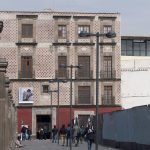
Cercano a 0.05 kms.

Cercano a 0.05 kms.

Cercano a 0.07 kms.
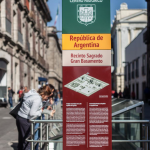
Dos ventanas a permiten vislumbrar el antiguo pasado de la ciudad.

Site of the rebirth of Modern Mexico from its ancient roots . . .

Uno de los sitios más importantes de la ciudad. No pierdas la oportunidad de visitar el Templo Mayor.
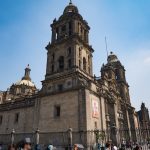
La primera Catedral construida en América.

Una de las principales instituciones culturales y artísticas de la Ciudad de México se vuelve cada vez más fascinante.